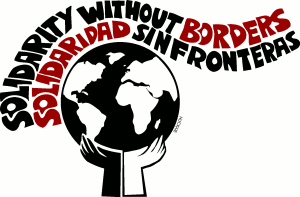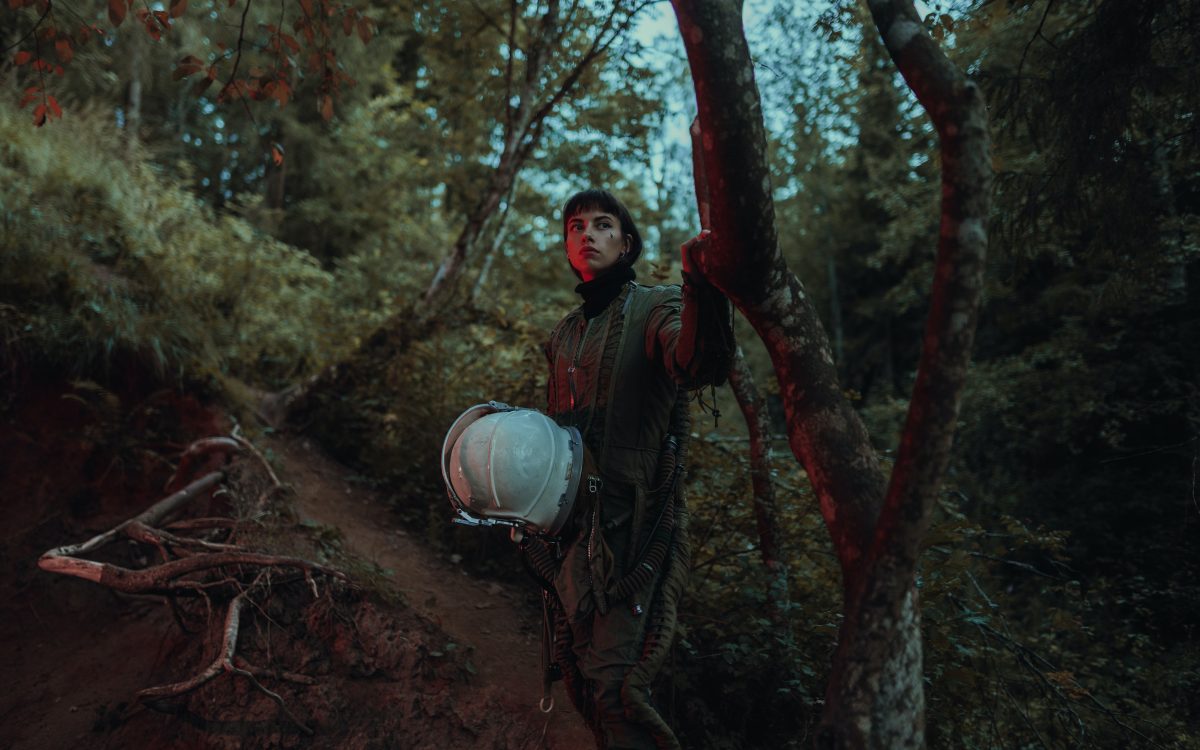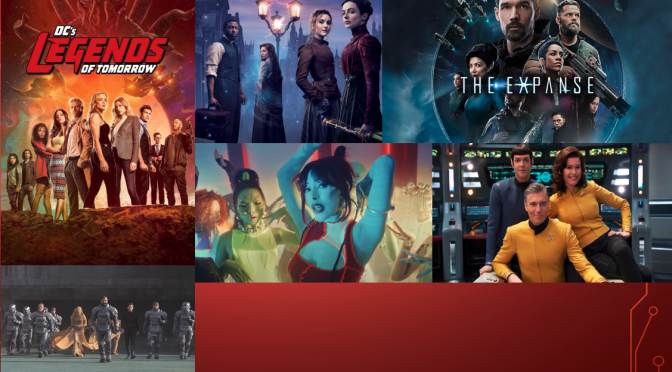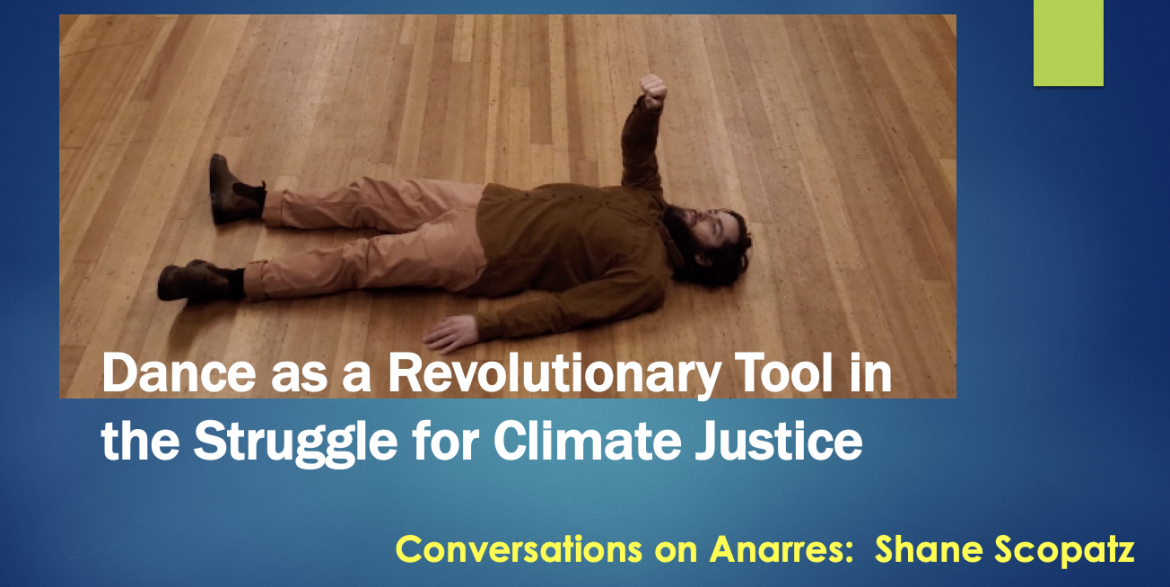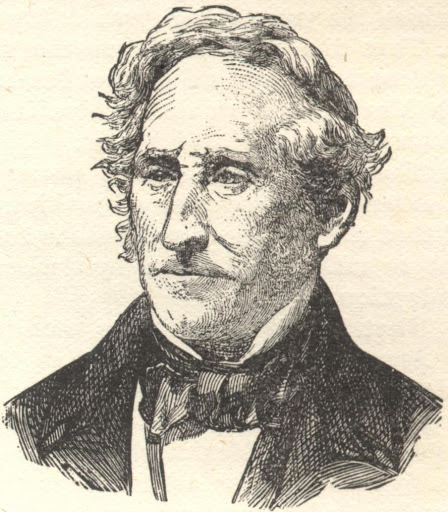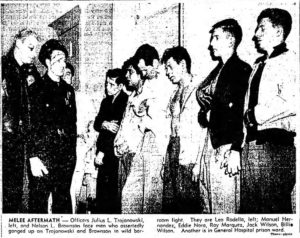By Joseph Orosco (March 16, 2020)
Last week, I held my last classes of the Winter 2020 quarter and, most likely, my last face-to-face classes for some time. It was the day after the university administration ordered that there were to be no in person exams or classes for several weeks. I knew going into these classes that my students would be scared, confused, angry, and traumatized. I was not wrong.
I began each class by just checking in with them to hear how they were feeling. Most expressed frustration about school—how was remote instruction going to work next term? What did they have to avoid doing in order to be safe? How were they going to manage?
I didn’t try to assure them that it would all be all right. I told them that, at least in terms of what to expect for their educational needs in the next few weeks: that its going to be a nightmare. The technology is not going to work all the time, and the educational experience is not going to be the same, and most likely, subpar to what they would have gotten otherwise. That’s because we are not offering online education, which is intentional, but remote education, which is about triage and trying to stuff material into new packages that are not necessarily time tested. Plus, I said, they were going to have to worry about more than their intellectual needs—they were going to have to think about their family and friends and themselves. How would all this work if they got sick, for instance? No our feelings of frustration and sadness are not going to go away anytime soon.
But I tried to emphasize that the work we had done in the past three months—thinking about peace, justice, human rights, and war in one class, and the political philosophy of Martin Luther King, Jr. in the other—could be useful for them to deal with these feelings of despair. Because the essence of our work together had been learning how to think about oppression and the philosophical tools to overcome injustice. Many of the tools we had examined had been forged over millennia from various wisdom traditions. Different cultures have grappled with trying to devise spiritual, moral, and meditative practices to struggle against the pain and suffering found in human life–some of it caused by our own selves, such as war and cruelty, and some of it which is just the inevitable in our existence, such as disease.
One of those traditions is Gandhi’s notion of Satyghaha—“soul force”—a kind of strength that comes from devoting oneself to committing no harm in a world full of harm and opportunities to perpetuate violence. Another one of those traditions of soul force was probably familiar to many (even though it is not one of my own). The early Christians sought to become spiritually resilient by imaging certain kinds of values they believed a person should embody in order to to be strong in the face of calamity. They arrived at the trio of faith, hope, and love. I admitted that when I tried to make sense of these theologically they often didn’t make sense to me. But I said I had been trying to work out the meaning of what these virtues in light of the philosophical arguments we had been unpacking together over the term. Here’s what I came up with for my students before we said goodbye:
Faith: Faith is usually taken as the belief in the existence or truth of something, God, without any evidence or reason to support that belief. It’s a belief that draws you toward it elementally—you either know God to be, or you just don’t. I admit I don’t. but I think I understand the psychological mechanism of faith. I see it as it operates in the life of Martin Luther King, Jr. He had Christian faith, that belief in the existence of God that requires no proof.
But I’m more interested in the fact that his career as a crusader for justice was always driven by a utopian vision of society. Sometimes he called this the “integrated society”, sometimes the “Beloved Community”, other times “the Promised Land”. Early in 1961, in his “I Have a Dream Speech”, he told the nation he was propelled into public life by the dream of a society in which human beings cared for one another, supported one another, and believed that their full potential as human beings could only come about if other human beings also had their potential supported. He called on us to imagine a world in which we could each be our best selves, helping each other to reach that life.
Yet in 1967, he admitted that this dream was nowhere close to being a reality. This was even after the Civil Rights legislative victories of 1964 and 1965, demolishing segregation and clearing a path to voting equality. But the cruel bombing that killed little girls in Birmingham, and the horrific bombings that were killing thousands in Vietnam, made Martin Luther King, jr agree with Malcolm X: the United States was a nightmare, the greatest purveyor of violence in the world, and it would lead all of humanity to extinction if it could not cope with its addiction to violence, racism, and greed.
At the same time, he said he still had the dream enticing him, even though there was no good proof that we were actually on the way toward building that society. The dream was a like sun using its tremendous gravitational pull on his imagination. Though there was no good reason to believe that the Beloved Community was manifesting right now, its power as a vision of what life might be like drove him into thinking that it just might be possible to build. And that was enough for him.
So faith may not have to be theological to be powerful. Martin Luther King Jr.’s dream can inspire us to activate our own imaginative powers to find that vision of a world of better selves that draws us out to make it real.
Hope: Here, I admit, that when I look at Christian theological discussions of hope, I get utterly lost. But it does seem as though hope is something that is in short supply among my students. They often tell me things seem “hopeless” or they don’t have “much hope” that the problems we study in class can ever be changed.
I recently read an interview with Cornel West in which he said that to talk about hope as some kind of sign that things are going to get better is probably a bad idea. Because, at least from the standpoint of Black folk in the US, there’s not a lot of reason to believe that the future is going to be so much brighter, more just. Instead, West recommends, we ought to think about “being a hope” rather than “having hope”. And what he seems to mean is trying to live an ethical life, devoted to justice and the ending of oppression, but without the satisfaction of knowing that your work is making any difference or that you will ultimately win in your struggle. Instead, the struggle itself is what should be meaningful.
The example of being a hope that came to mind for me is from Albert Camus’ novel The Plague (a book that apparently no one reads in high school anymore since only one person in two classes had ever read it). The story of the novel is of a plague that strikes the North African town of Oran and how people react to its destructive path. The character that stands out for me is Dr. Bernard Rieux. As the plague envelops the town, he is a tireless worker. He cares for the dying, tries to soothe them as best he can, and he watches hundreds die. He knows he cannot save so many. But each day he gets up and goes to work and tries to do the best job he can because he is a doctor. He is not motivated by any religious belief to help the afflicted, or any political ideology to stand with the oppressed. There are other characters that do that in the novel. He does what he does because he must—he’s a doctor and that’s what doctors do, and that’s who he is. He cares for the dying even though he thinks it’s not clear it will change the plague situation at all.
Rieux seems to be what West calls “a hope”. He does what he has to because to do otherwise is to betray the values that make him who he is as an individual. The trick seems to be then to figure out how to build a life in which one goes out each day and does good, ethical work, without any signs that it will change the world or motivated by the effects we have. Should we even try to do anything about climate change at this point? Will our efforts even matter to make life possible for human beings? Who knows? But a good person will try to work on this now because that’s just what a good person does. Can we even eradicate white supremacy in the US after centuries of its entrenchment here? Isn’t racism simply a permanent feature of our social landscape? According to Afropessimism maybe. But a good person will devote themselves to anti-racist work, personally and socially, nonetheless because that’s just what a good person does. There are no signs that our climate justice or anti-racist work will eventually succeed in grand victories, but that’s beside the point. Hope is not about those signs, but being the kind of people that think the struggle against those injustices and evils is worthwhile in itself.
Love: I’ve found that this aspect of Martin Luther King Jr.’s work is some of the hardest to understand and teach. King went to great lengths to try to explain what he means by love, and I know many Black activists even today who dislike this emphasis. My students scoffed especially when King would that white people needed Black people’s love in order to overcome their commitment to white supremacy (he talked a lot like this in the late 1950s—after about 1965 he didn’t speak of nonviolence in quite these terms anymore. He talked about creating crisis rather than sowing love).
It’s always important to remember that King did not mean that Black people had to like white people. By love, he meant respect (using the ancient term agape)–a caring for a person not because they have particularly likeable qualities, but simply because they are a person.
I think this makes more sense when we recall that the essence of oppression is about dehumanization—the capacity to forget or ignore the humanity of other persons. Phillip Halie says that oppression, or substantial cruelty, happens when there is a power imbalance that allows one group to ignore and crush the dignity of another group of people. In this way, oppression is really when power and authority imbalances eliminate love/respect.
King then was trying to find a way to make love of humanity the linchpin for just transformation of society. Halie warns that the answer to oppression is not individual kindness, not charity. We need structural revolution to remove the imbalances of power that inure people to one another. Its important then not to put too much emphasis on love as the end all, be all. Maybe its good to think along with Cornel West again: “Justice is what love looks like in public”.
In the next few months, love might be in short supply, supplanted by fear, suspicion, and panic that seem to be sowed by our leaders. But we will need to be patient, show kindness and compassion to ourselves and others. Most importantly, it will be necessary to make our love/respect real. This will be hard in time of what is called “social distancing”. I prefer to call this “physical distancing” because what we will need to get through the crisis of disease and institutional collapse will be even more social (or soulful) connection with one another. So much of our world is already full of loneliness, alienation, and social distance and the worst parts of this crisis will build on those tracks laid deep into the foundation of our every day lives.
I’m impressed with the accounts of mutual aid networks already being built up in neighborhoods to deliver good and services to people who might be more vulnerable to contagion. What kinds of support will be developed for all the hospitality servers that are going to find themselves our of full time work? More of this will have to happen, I’m afraid, because I think its clear from what happened in the case of Hurricanes Katrina in New Orleans and Maria in Puerto Rico, that the federal government is not to be relied upon to provide adequate care and services, especially for poor and working class areas. This doesn’t mean we shouldn’t challenge the government to be more proactive—we should, because otherwise its tendency will be to protect the powerful at the expense of the poor.
These are scary times. And it may get worse before it gets better. But hopefully we realize all these efforts at containing the virus, and helping the afflicted, are global and this is a experiment in human solidarity that we can learn from in order to do even more amazing and grander things in the future. Through the love we express today, we can start to gather the images for the society we want to have faith in later, and in our work, be the hope that gets us through the day.
